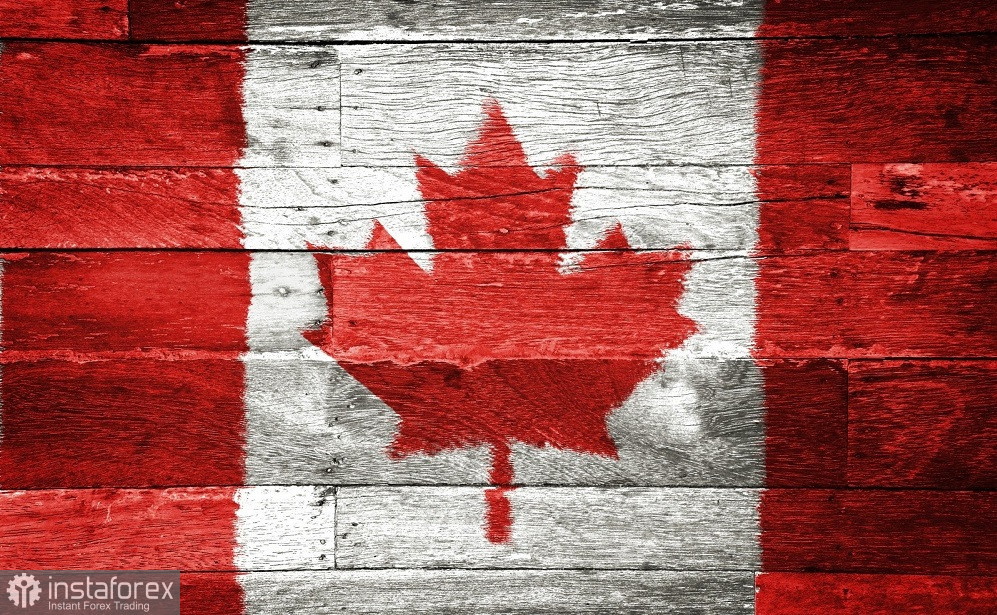"Canadian Nonfarms," published last Friday, remained in the shadow of a similar American release. However, USD/CAD is perhaps the only currency pair among the "major group" that reacted to the disclosed reports with the greenback getting stronger. Traders of other currency pairs interpreted the US report against the greenback. In this case, the loonie stood out.

Nevertheless, the upward momentum of USD/CAD is quite understandable, as the "Canadian Nonfarms" data were not contracting in content but just downright disappointing. Some components of the report came in worse than expected and quite significantly. For instance, experts predicted an increase of 25,000 in the number of employed individuals in July, while the actual figures demonstrated a negative trend: during the second month of summer, the number of jobs decreased by 6,000. The indicator again turned negative (-6,400) after a substantial surge (59,900) in June. The unemployment rate in Canada also rose, and in this case, the result coincided with analysts' expectations. However, the increase was minimal, up to 5.5% from the previous value of 5.4%. But on the other hand, a certain negative trend is forming here - the indicator has been steadily rising for the past three months.
The number of employed individuals in full-time positions increased by only 1,700, while the number of part-time employees decreased by 8,100. As is known, full-time positions entail higher salaries and social security, positively impacting consumer activity of Canadians and eventually inflationary growth in the country. Therefore, such a trend is clearly not in favor of the loonie. The report's structure indicates that the most significant job cuts last month occurred in the construction industry.
The majority of currency strategists had a negative reaction to the report. In particular, according to experts at TD Bank, the rise in unemployment indicates that the economy is underperforming: a growing number of people without jobs in Canada, but still part of the labor force, is being recorded. Based on the bank's updated forecasts, the pace of Canadian economic growth will continue to slow, likely leading to an increase in the unemployment rate to 6.5% in the fourth quarter of next year. Overall, TD's economic forecasts suggest that the Bank of Canada does not need to raise interest rates again at the next meeting.
Take note that the Canadian central bank, when deciding to raise rates in July, indicated that this move could be the last in the current cycle of monetary tightening. According to the head of the central bank, Tiff Macklem, further actions by the central bank will be determined by the assessment of incoming data and inflation prospects.
In this context, it's essential to recall that, according to the latest data, Canada's inflation rate in June decreased to 2.8%, the weakest growth rate in over two years. In May, the inflation rate was 3.4%.
As a result, the Canadian labor market only added to the established fundamental picture and clearly disappointed USD/CAD sellers, holding them back from seizing the initiative. However, buyers also failed to break above the price range ceiling of 1.3350-1.3400. Dollar bulls need more information to push them to go higher, and this, in my opinion, can be provided by the US inflation report for July. The report is set for Thursday (August 10), and according to preliminary forecasts, the Consumer Price Index (CPI) will demonstrate a positive trend. The indicator is expected to rise to 3.3% after a June increase to 3.0%. In this case, the CPI will demonstrate an uptrend for the first time after a 12-month downtrend. If this inflation report comes out at least at the forecast level (let alone in the "green"), the greenback will significantly strengthen its positions. In that scenario, the USD/CAD pair may break beyond the aforementioned range and settle around the 1.34 level.
From a technical perspective, the pair is trading between the middle and upper lines of the Bollinger Bands indicator on the daily chart (indicating a preference for the bullish scenario) and within the Kumo cloud. If USD/CAD traders surpass the 1.3400 mark (upper band of the cloud, coinciding with the upper Bollinger Bands line), the Ichimoku indicator will form a bullish "Parade of Lines" signal. The next level of resistance (in this case, the target of the upward movement) is at the 1.3470 mark – the upper band of the Kumo cloud on the weekly chart. Considering the dynamics of key macroeconomic indicators in Canada (inflation slowdown, rising unemployment, declining number of employed), traders can consider long positions in the medium-term perspective. Strong US inflation will only strengthen USD/CAD bullish positions.





















